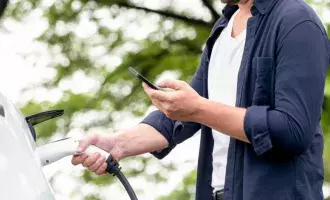We’re seeing a variety of new trends affecting the utilities market, relating to the environment, infrastructure and consumers.
Shifting consumer expectations and priorities, government green initiatives, the accelerating pace of technological advancement and the threat of climate change – all of these will alter the way that the sector does business, from the way its sells energy to customers’ increased adoption of electric vehicles and smart homes.
Adapting to these fundamental changes will require a high level of agility from the utilities sector, which has infrastructure that is decades old. It’s facing challenges including:
- changing internal infrastructure so that it can deliver new, greener products and existing services in new ways
- retraining and reskilling employees to make them experts in new products
- delivering the best customer service
- tying all of this together with the appropriate technology.
In the first in a series of blog posts examining the utilities sector’s future, we’ll be exploring three key trends affecting it: decarbonisation, consumer power and digitisation.
These trends are interlinked in a number of ways – the need to decarbonise to combat climate change, for example, is drastically changing the way that customers consume and conserve resources. At the same time, the application of digital technology in other industries is leading them to form new expectations around what a service provider can and should deliver, how quickly and how efficiently.
This interplay of factors is bringing to life a sort of consumer 2.0, and utility companies will need to innovate to keep up.
Decarbonisation
The fight against climate change has been gathering speed for years and is only growing stronger. On 18th November 2020, the UK government published its Green Industrial Revolution policy paper.
The paper lays out a 10-point plan for net zero carbon emissions by 2050. It’s an ambitious agenda that includes increasing investment in offshore wind, hydrogen and nuclear technologies; promoting electric vehicles and public transport for personal travel; investing in smart home technology; carbon capture initiatives, and turning London into a centre for Green Finance.
The Government has already made significant strides in promoting EVs, although providing the charging infrastructure needed to make them a viable transport option is still a long way off. It has introduced initiatives to reward people for purchasing EVs and subsidies for those transitioning from diesel and other high-emission vehicles. The British public needs to be educated more, however, to dispel misconceptions and anxieties around the durability, reliability and charging time of EV batteries and the availability of charging points before adoption can become more widespread.
The demand for renewable energy will continue to grow, driven by the declining costs of technology and the need to reduce CO2 emissions. But one of the challenges of renewable energy is that we haven’t found an effective way to store it. End users (renewable energy generators, grid operators and distributed generation) are expected to install much more energy storage due to smart grid development. The battery energy storage system market that had an estimated capacity of 4.9GW in 2018 is expected to reach 22.2GW by 2023, according to GlobalData, although it’s still expensive for customers. As consumers become microgenerators themselves, we’ll need to find affordable ways to store the energy they generate.
Covid-19 has shifted demand for energy. With fewer people commuting to work, the concept of rush hour has changed dramatically as people swap the physical commute for a digital one. The work-from-home revolution brought about by the pandemic has led to far less gas and electricity being used in industrial spaces and far more being used in the home – but this didn’t counterbalance the amount of energy that would have been consumed by industry.
More and more organisations are opting to generate their own electricity with wind turbines or solar panels, becoming less reliant on coal-powered stations. Being more self-sufficient in this way has two advantages: it keeps electricity costs down and, perhaps more importantly, enables them to meet customer expectations that organisations should support the carbon-neutral target.
Nuclear energy is a popular option for the Government as it is a low-carbon source of secure, reliable power – although it is expensive. In the 1980s, in response to protests following major incidents at nuclear plants such as Three Mile Island and Chernobyl, it bowed to public pressure to decommission nuclear stations. Today, nuclear power’s ‘cleanliness’ has largely rehabilitated it, with environmental focus shifting to carbon as the looming threat to life on earth.
However, the fact remains that nuclear waste is extremely dangerous. If the Government invests heavily to meet its carbon targets in the medium term, it should also be seeking to sustain the environment in the long term, and cutting carbon may not be enough if we continue to generate nuclear waste.
Power to the customer
Three factors in particular are influencing the next-gen consumer: green considerations, cost-consciousness and customer experience.
Today, the public are much more conscious of their impact on the environment and what they can do to reduce their carbon footprint. This is driving their demand for green energy, adoption of green technologies such as EVs and smart homes, microgeneration practices and so on. Together with this goes the desire to make our homes more self-sufficient, to reduce their running costs and their levels of consumption. According to Markets and Markets, the smart home market (driven by smart meters) will be worth $138bn by 2023.This will empower customers to monitor their energy consumption in real time and manage their energy costs.
We’ll go into more detail about the next-gen consumer in the next blog post, but it bears noting that their expectations of the customer experience have evolved a great deal in the past decade. The proliferation of smartphones and of businesses’ dedicated apps means that they can use just about any product or service from their handheld devices. The banking industry, for example, has created an expectation that we can manage our money without encountering another person and with seamless ease. This expectation doesn’t end with banking – under lockdown, even the most technophobic of customers have embraced the end-to-end digital experience of managing their lives online. And there’s no going back.
With new players entering the market, the Big Six are a thing of the past. Smaller, more agile providers are able to offer consumers a digital experience more like those they have become used to. The UK Consumer Satisfaction Index, whose research focuses on customers’ priorities to provide insight into their interactions with and expectations of organisations, reports that Octopus Energy and Bulb appear for the first time this year – and are the highest-rated organisations in the utilities sector.
Digitisation
As I mentioned earlier, digitisation is also creating new customer expectations of service delivery.
AI is making waves in industries around the world, and the energy industry is no exception. It’s helping energy companies and consumers to collect and sift through data to identify and track trends in energy generation and consumption. Smart meters and smart energy management systems are also integrating it.
The Internet of Things and AI can help maximise our efforts toward environmental sustainability and regeneration. From reducing e-waste to increasing renewable energy, these technologies have multiple applications that benefit the planet.
Digitisation brings with it new challenges, however. According to the US Chamber of Commerce, the UK has the world’s second most secure energy supply, meaning there’s very little risk of cuts or of sudden increases in energy prices. But with smart technology, always-on infrastructure, increasing decentralisation and microgeneration comes the risk of cyber-attacks. Hackers targeted Australia’s power infrastructure early in 2020, and in 2019 the UK’s Department for Business, Energy and Industrial Strategy and the energy regulator Ofgem warned that “the potential impact to the grid stability from a cyber compromise of multiple smaller DER assets could be significant” following a review of cyber security risks to distributed energy resources.
But technology has the potential to be at the forefront of the energy revolution. To meet its carbon objectives, the Government will need to invest in tidal, wind and solar energy. As technology has evolved, the amount of electricity we can derive from solar alone has doubled per surface area during the last decade.
Look out for the next article in this series, in which we’ll be examining the next-gen energy consumer.

Rupal Patel
Account Leader, Critical Infrastructure
Rupal is a proven leader with a track record of delivering in challenging circumstances without compromising quality or losing sight of the overall business strategy. She has played a fundamental role in transforming the utilities sector and implementing digital and innovation practices and is a recognised source of expertise in the utilities and smart energy industry with over 15 years of experience.







